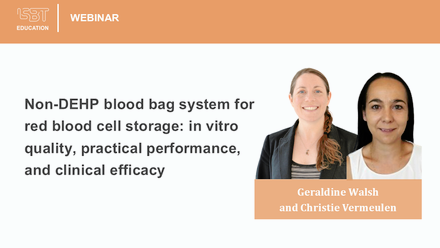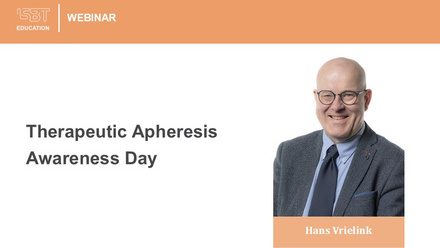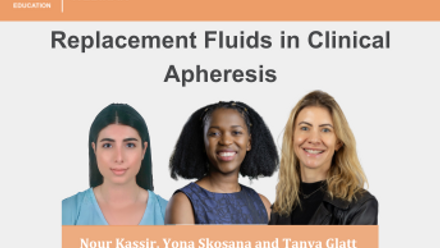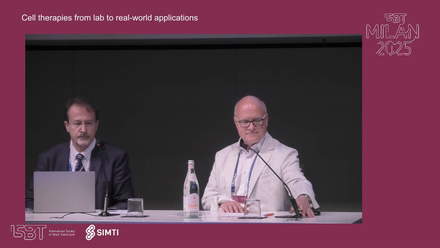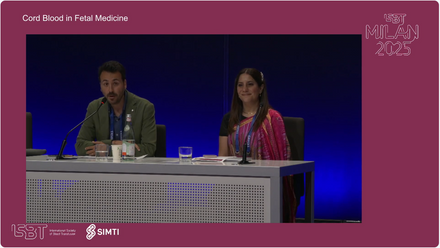The Joint ISBT / EHA session–CAR-T cell therapeutics and stem cells session included the following presentations:
1. Christian Chabannon: Update on CAR-T therapeutics
2. Nina Worel: New Pespectives on the Role of Blood Services in CAR-T
3. Angeles Fernandez Rodriguez: Pressure ulcer treatment with autologous bone-marrow mononuclear stem cells. EudraCT 2008-003015-12 results
4. Naoko Watanabe-Okochi: Criteria of storage for cord blood units at Japanese Red Cross Kanto-Koshinetsu Cord Blood Bank
MODERATORS: Erica Wood, Allison Waters
After the presentation, there was a questions and answers session, which is also included in the recording.
Abstract
Criteria of storage for cord blood units at Japanese red cross Kanto-Koshinetsu cord blood bank
N Watanabe-Okochi1, T Odajima2, M Ito1, M Shinozaki1, M Minemoto1, F Ishimaru1, K Muroi1, M Takanashi2
1Japanese Red Cross Kanto-Koshinetsu Block Blood Center, 2Blood Service Headquarters, Japanese Red Cross Society, Tokyo, Japan
Background: The number of cord blood transplantations (CBTs) exceeds the number of adult unrelated stem cell transplantations in Japan. It is the responsibility of the cord blood banks (CBBs) to improve the quality of the processing and storage by analysing the processing data.
Aims: The purpose of this study is to analyse the criteria for storage of cord blood (CB) units in the Japanese Red Cross Kanto-Koshinetsu CBB, and to provide data that will be the basis for creating appropriate CB processing and storage criteria to efficiently store CB units with higher quality.
Methods: The Kanto-Koshinetsu CBB received 29,795 units from CB collection centres and 5486 (18.4%) were stored as transplantable units from 2014 to 2021. The collection centres were instructed to send the CB unit only when they collect >60 mL. The factors investigated for this study were gender, blood type, gestational period, volume of CB, total number of nucleated cells (TNC) at pre-processing and post-processing, number of CD34+ cells, colony forming units (CFU), time from collection to cryopreservation, time from arrival at the CBB to cryopreservation and cell viability (CD45+ cells, CD34+ cells). The criteria for storage were; over 12 × 10E8 TNC, start freezing process within 36 h from collection, no blood clot (size not specified), and adequately completed documents (consent form, questionnaire, family history, and delivery record). From 2021, if the TNC count was from 12–14 × 10E8, and the CD34+ cell count was over 2.5 × 10E6, then the CB was processed and stored. Units with over 14 × 10E8 TNC were processed and stored without a pre-processing CD34+ cell count. All processed units were tested for TNC, CD34+ and CFU.
Results: The Kanto-Koshinetsu CBB has received about 4000 CB units annually. From 2014 to 2021 the average time from collection to reception of 29,795 units was 18.0 h. All CB was obtained following gestational periods of 32 to 42 weeks. Collection at 37 weeks or less was performed at the discretion of the obstetrician. The most common reason for not storing a CB unit was insufficient cell numbers (pre-processing TNC <12 × 10E8), accounting for 47.9% of the total number of units received, followed by insufficient CB volume (<60 mL) for 19.4% and the presence of a blood clot for 10.3%. The average volume of 29,772 units received was 76.8 mL, with the maximum 234.2 mL and the minimum 20.9 mL. There was no correlation between the CB volume and pre-processing TNC (R2 = 0.4618). The storage rate for all CB units received was 18.4% (5486/29,795 units). For the 5486 stored units, the post-processing CD34+ cell number was not correlated with the collected CB volume (R2 = 0.0579). The shorter the gestational period, the higher the post-processing CD34+ cell count in the CB (35–37 weeks vs. 38–41 weeks, p < 0.05). The longer the gestational period, the more pre-processing TNC (37–38 weeks vs. 39–41 weeks, p < 0.05). The collected volume of CB did not correlate with the gestational period. Of 2335 units with 12–14 × 10E8 pre-processing TNC, 1123 units (48%) exceeded the CD34+ minimum criteria of 2.5 × 10E6. According to these results, we should expand the criteria for units with TNC <12 × 10E8 and the CB volume <60 mL from a gestational period of 38 weeks or less, by measuring the CD34+ cell count. In this way we can secure additional CD34+ rich units.
Summary/Conclusions: According to the transplant centres’ changing preference for choosing CB based on the CD34+ count rather than the TNC, our CBB introduced pre-processing CD34+ cell counting for units with TNC of 12–14 × 10E8. There are units with a high CD34+ count when the gestational period is less than 38 weeks. The CB volume limit could also be lowered.

